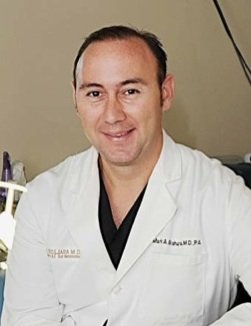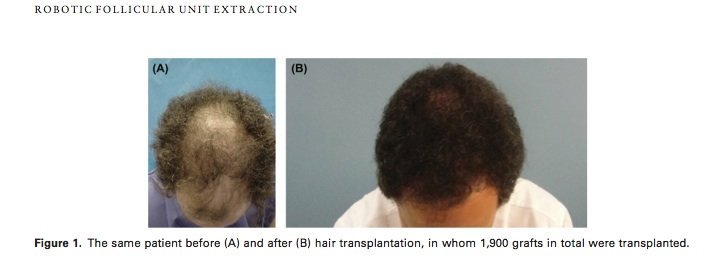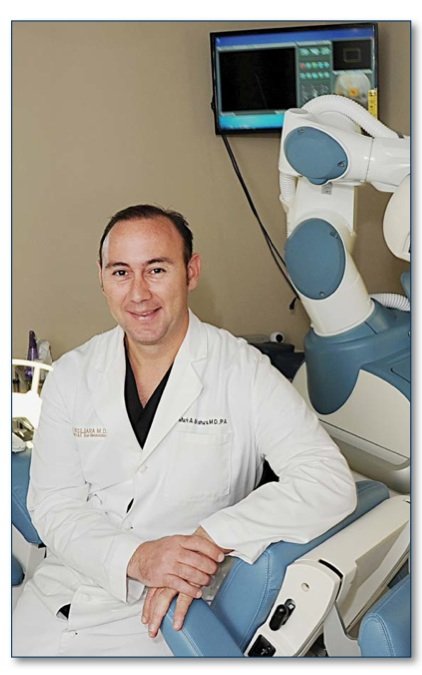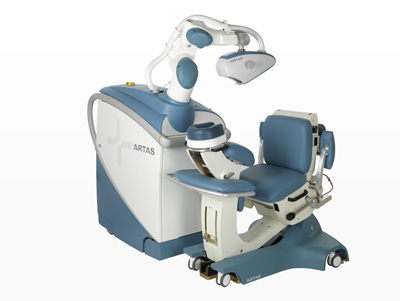What is a Robotic Hair Transplant?
 A robotic hair transplant is a type of hair restoration procedure where donor hair is removed directly from the back and sides of the scalp using robotic control. The specific type of hair transplant where robotic technology is used is called follicular unit extraction (FUE). In FUE, a small, round instrument, or punch, is use to separate individual follicular units (naturally occurring groups of 1-4 hairs) from the surrounding tissue, so that they can be extracted and then implanted into the balding area. This process is very tedious and exacting and when done manually often leads to significant injury to the follicles.
A robotic hair transplant is a type of hair restoration procedure where donor hair is removed directly from the back and sides of the scalp using robotic control. The specific type of hair transplant where robotic technology is used is called follicular unit extraction (FUE). In FUE, a small, round instrument, or punch, is use to separate individual follicular units (naturally occurring groups of 1-4 hairs) from the surrounding tissue, so that they can be extracted and then implanted into the balding area. This process is very tedious and exacting and when done manually often leads to significant injury to the follicles.
Robotic surgery allows this procedure to be done in a more precise and consistent way, ultimately maximizing the growth of the grafts. In a robotic hair transplant, follicular units are extracted one at a time by the image-guided, computer-driven system called ARTAS, a technology developed by the company Restoration Robotics. At The Paragon Plastic Surgery & Med Spa, all Follicular Unit Extraction (FUE) procedures employ the speed and precision of the robotic system.
How Does the ARTAS Robotic Procedure Differ from Other Hair Transplant Procedures?
There are two basic types of hair transplant procedures, Follicular Unit Transplantation (FUT or strip surgery) and Follicular Unit Extraction (FUE). In FUT, donor hair is harvested by removing a long thin strip from the back of the scalp. Individual follicular units are then obtained from this strip using stereo-microscopic dissection. In FUE, individual follicular units are harvested directly from the donor area using a sharp, round cutting instrument. The ARTAS Robotic Hair Transplant system performs the follicular unit isolation step of an FUE procedure and can also create recipient sites according to specifications determined by the hair restoration surgeon. In performing each of these steps, the robot uses its image-guided technology to locate the next target and position the cutting instrument, and it does so with precision and speed that cannot be accomplished using manual FUE techniques or instruments.
Hair restoration information is available in our office. Please contact us at 817.473.2120 to schedule an appointment. You can also visit our website at www.MarkBisharaMD.com.








